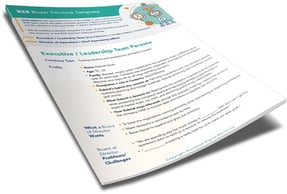author
Diona Kidd
 Executing successful email marketing campaigns is a critical part of inbound marketing. Once a potential lead or customer opts in, your email is a communication opportunity that can create a new relationship or re-engage with an old one. When integrated with other website inbound marketing strategies, an email marketing campaign becomes an invaluable tool in your marketing toolbox.
Executing successful email marketing campaigns is a critical part of inbound marketing. Once a potential lead or customer opts in, your email is a communication opportunity that can create a new relationship or re-engage with an old one. When integrated with other website inbound marketing strategies, an email marketing campaign becomes an invaluable tool in your marketing toolbox.
Why, then, do most companies struggle to achieve average clickthrough rates north of three percent? It’s always easiest to point a finger first at content, but it’s really not that simple. When plotting your email marketing campaigns, your modus operandi should start— like most marketing efforts — by knowing your audience.
Email Marketing Campaigns: Know Your Personas
When aiming to create a marketing strategy, persona development should be your first priority, since so much of what you’ll need to do depends on the types of people who make up your targeted customers.
Don’t make the mistake of talking about "how" to market before you know your "who.”
Customer research will reveal common denominators among your customers, yielding personas representative of a few different types. Personas should be as detailed as possible, going far beyond just a name and demographics. You can also create goals, quotes, and common objections from each persona group, too. The more detail, the better, since how well you know your prospective clients is critical to developing effective email marketing campaigns. Your CRM probably already has a customer data tool to help you identify top customer persona information. If not, dive into demographics data in Google Analytics or your Facebook analysis tools.
How does this relate to email marketing campaigns? It goes right back to "who" over "how." If you’re sending out emails, different messaging will impact each persona differently. That’s the whole point.
Email Content Is King— in the Right Context
Of course, content matters, now more than ever. While speaking the right language gets you in the door, engaging content is what gets you invited to speak directly with your prospect or move them through a sales funnel. Each persona will align with a phase in the buying cycle and their most common point of interaction - Awareness, Consideration/Education, or Decision. Context matters.
For example, manufacturers who connected with a prospect through an event listing or news article might send an email to a product’s end user that includes a promotional sample offer or an exclusive shopper guide. On the other hand, if the prospect is part of an R&D team, an email, something more technical would be in order, such as a process video or a white paper. Each page of your website should align with certain personas so that form submissions from those pages drop the prospect into the right segment with just the right message.
Obviously, there is a myriad of approaches to choose from and analyze. While there are always anomalies, it’s easy to see that if you use a blanket approach across both of those manufacturing personas, you’d lose one-half of your intended audience immediately. Instead of using a blanket approach, dive into the data you already have to help you identify the right email message for each segment. Begin by mapping your customer’s journey and identifying a message that will keep them engaged, interested, and moving through the pipeline.
The beauty of email marketing campaigns is that they can be used across the spectrum of the lead generation process, for attracting, converting, and closing leads, and then for delighting those leads that have become loyal customers. With closing the sale as the ultimate marketing goal, identifying your perfect customer has to be the starting point, followed by creating a tailor-made message for them. Like most marketing efforts, it often boils down to a numbers game: more click-throughs will ultimately lead to closing more sales.
Marketing would be easy if you only had one target to hit. Marketing is never that simple; growing brands have multiple targets to hit. By establishing strong personas and segmenting your email messaging to speak their language, your email toolbox will have the arrows needed to hit those multiple targets.
Need a persona template? Use our B2B Buyer Template to get started:
The Case for Email Segmentation
Since different marketing messages resonate with each persona, you must segment them into groups for your email marketing campaigns. In simpler terms, think of this concept in terms of your own buying experiences. What has more impact— a form letter that speaks in generalities, or a personal note that shows value to you and your situation? That’s the way you have to think of email marketing campaigns. The more you’re able to drill down and personalize your content for different personas, the more likely they’ll click through to take the action you’re suggesting.
When communicating directly with customers and leads through email, success relies on messaging that resonates with your customer. If you aren’t speaking their language, they’re going to delete your email before reading through it, and there’s little hope for them clicking through to your website. For email marketing campaigns, segmenting really means customizing the perfect message for a particular persona at their exact buying stage.
Three Easy Steps: Engagement, Reminders, and Action
Creating great email marketing campaigns takes creativity, patience, and not ignoring the rules of engagement, such as persona creation. From there, it’s a matter of using content that engages your audience, reminds them of your value, and challenges your prospect with a call to action.
Engage your audience with a multimedia approach. While one constituency would allow for video or podcasting links, others may be more comfortable with a blog article or a microsite dedicated to the topic or product of their interest. While you’re going about with your engagement, use reminders, such as abandoned shopping carts, to take your shot at re-engaging your prospect and closing the sale the second time around.
Finally, take every opportunity for making a call to action (CTA). The CTA is critical to the success of small and mid-sized business. Whether you’re moving a prospect through the business development funnel, sharing content of increasingly high value or simply attempting to close the sale, a CTA can often move prospects to buy or progress in that direction. If you don’t have time to create something original for your email campaign, begin by directing them to the sections of your website that generate the highest number of conversions.
.webp?width=900&height=548&name=wyatt-mobile%20copy%20(2).webp)


